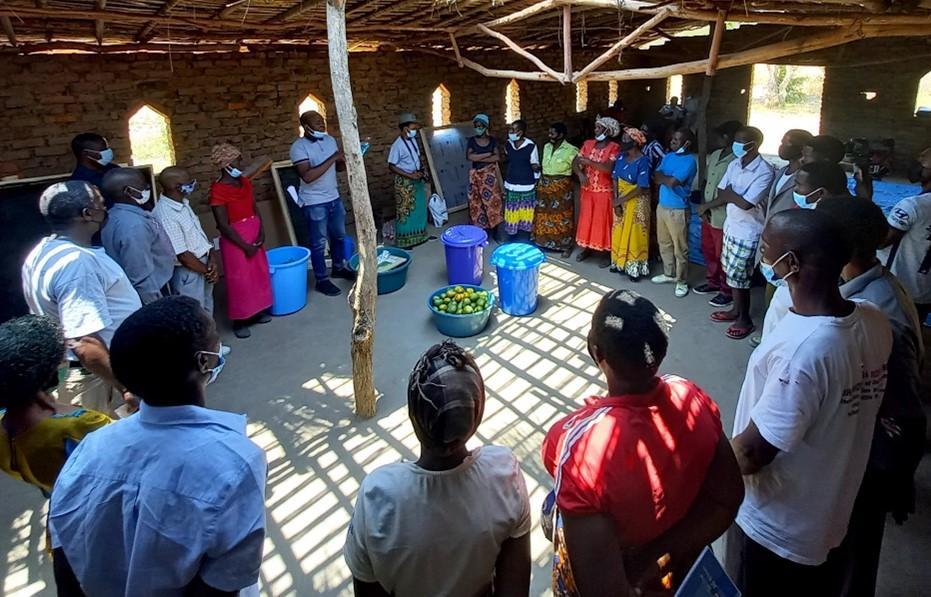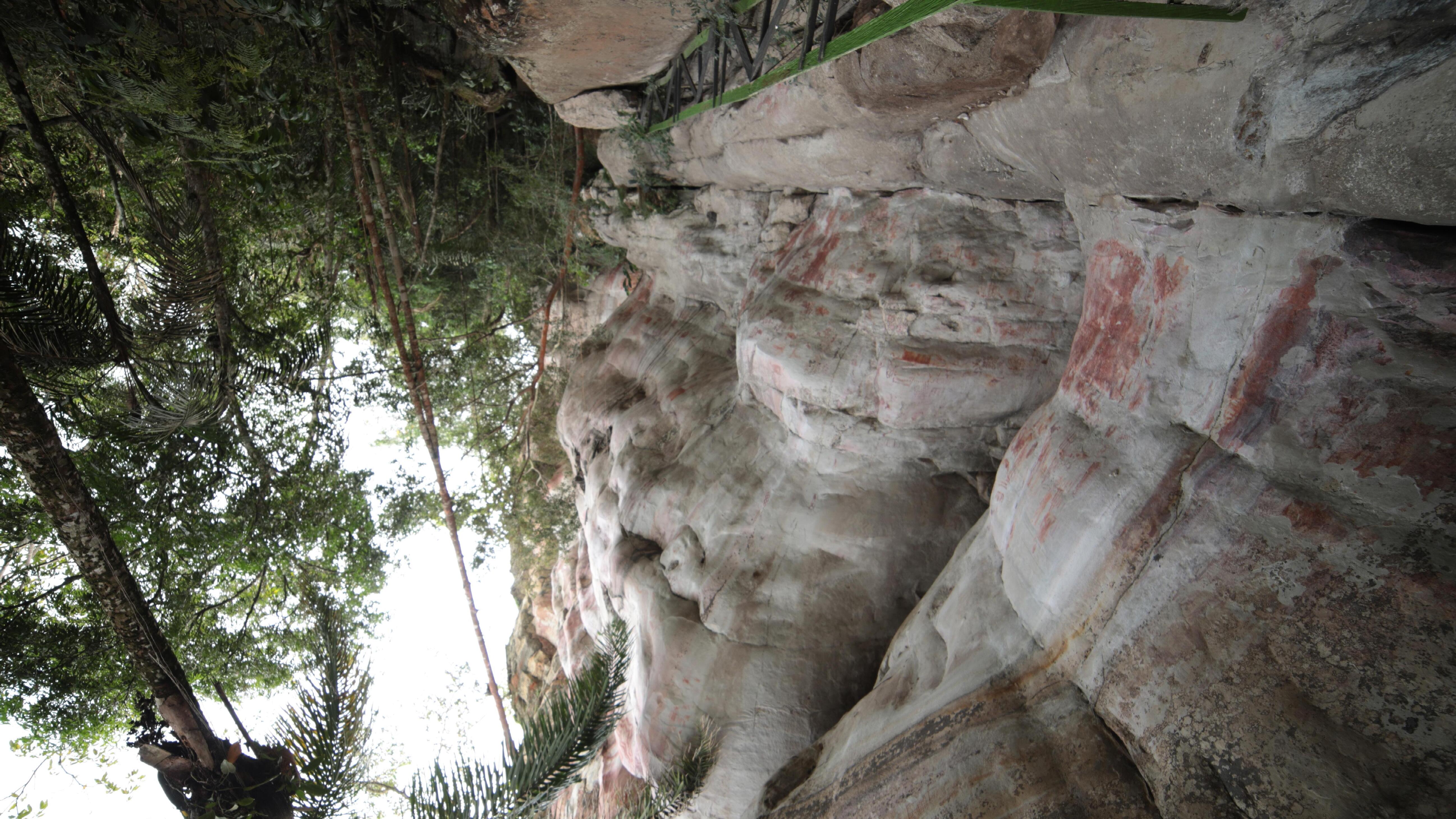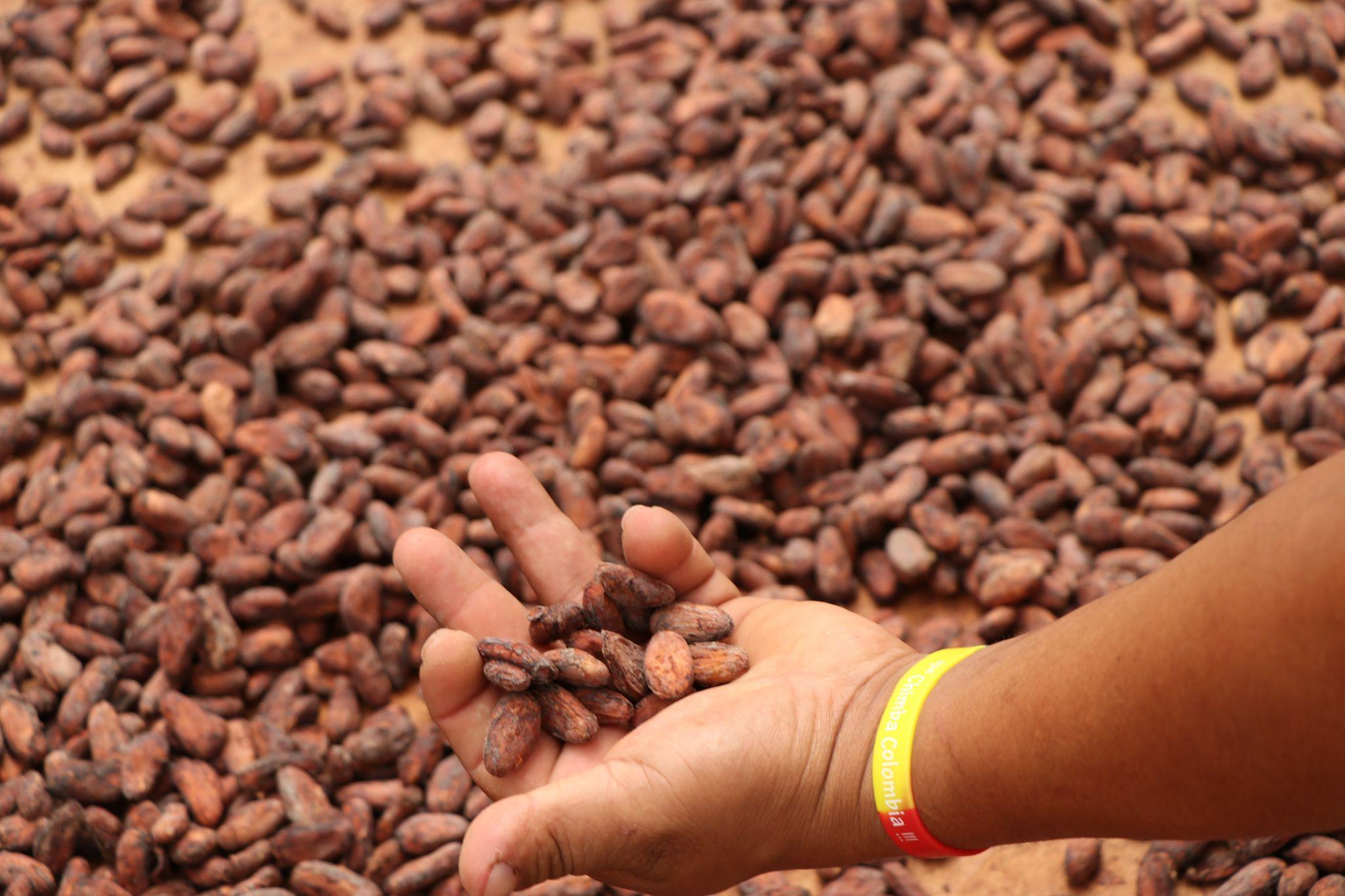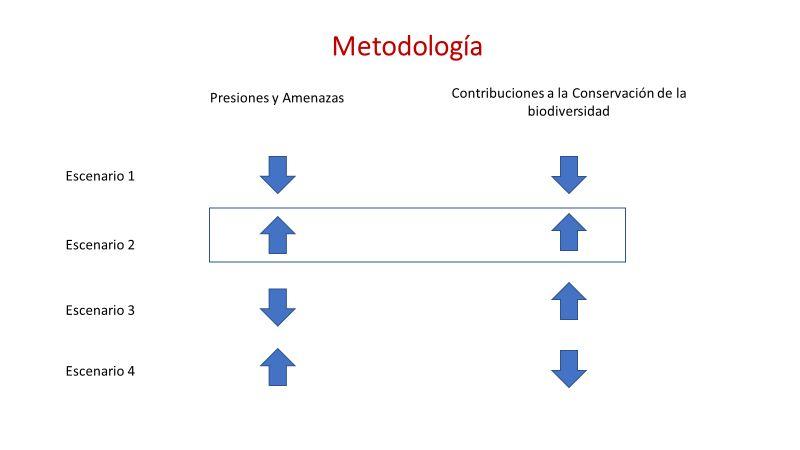






Group Final Session
August 23, 2022 9:00–10:30 a.m. EDT
● Welcome and Do Now (10 mins)
● Objectives and Session Agenda (5 mins)
● Team LightningTalks (20 mins)
● Tool Sharing and GalleryWalk (55 mins)
● Next Steps (5 mins)

Conservation Enterprises Impact Lab
How many flowers must honeybees pollinate to make one pound of honey?
A. 1,000
B. 50,000

C. 1 million

Conservation Enterprises Impact Lab
D. 2 million
Which country was the first to cultivate vanilla?

Conservation Enterprises Impact Lab


Conservation Enterprises Impact Lab
● Welcome and Do Now (10 mins)
● Objectives and Session Agenda (5 mins)
● Team LightningTalks (20 mins)
● Tool Sharing and GalleryWalk (55 mins)
● Next Steps (5 mins)

Conservation Enterprises Impact Lab
We will:
● Share your theories of change for conservation enterprises from your posters and key lessons.
● Share tools and approaches for measuring enabling conditions,stakeholder benefits,and conservation attitudes and behaviors.
● Inspire and motivate continued measuring and sharing of the impact of your CE approaches in the future.

Conservation Enterprises Impact Lab


Conservation Enterprises Impact Lab
● Welcome and Do Now (10 mins)
● Objectives and Session Agenda (5 mins)
● Team LightningTalks (2-3 min each = 20 mins)
● Tool Sharing and GalleryWalk (55 mins)
● Next Steps (5 mins)
Enterprise Types
• IBIS Rice
• Organic cashew nut
• Vegetables
Other value chains may be included later (e.g., turmeric, banana).
Support
Conservation Enterprises
ACTIVITIES
Partners support village marketing networks (VMNs) to transition production from conventional commodities to wildlife-friendly products with premium prices and a community-owned compliance system. They also engage lead firms and investors to increase the market viability of these products.
USAID: Sothira Seng; SMP: Socheat Keo; Tetra Tech: Vaneska Litz, Thuy Seng, and Leang Song Chhem
Through a market systems approach, the USAID Morodok Baitang supports 22 villages to produce wildlife-friendly organic rice and other products by improving production, supporting certification compliance monitoring, and removing barriers to investment.
Enabling Conditions in Place for Enterprises
ASSUMPTION
As a result of support for enterprises, VMN members have land registered for production, capacity to produce wildlifefriendly products; strong market demand for their products; and conservation agreements in place and the capacity to monitor and enforce them.
WHAT IS MEASURED & HOW
Partners track land registration, uptake of production practices, number of conservation agreements in place, and demand for product.
KEY LESSONS
Because the government does not formally recognize land rights, land insecurity may inhibit investment and benefits from enterprises.
Benefits Realized by Stakeholders
ASSUMPTION
As a result of participating in enterprises, VMN members have increased household income from products and REDD+ and potential health benefits from less exposure to harmful chemicals.
WHAT IS MEASURED & HOW
Partners conduct household surveys to assess income and other benefits generated from wildlife-friendly certified products and REDD+.
KEY LESSONS
At some sites, there is low participation in wildlife-friendly agriculture because farmers perceive food security risks of converting from non-organic cash crops.
Stakeholders’ Attitudes and Behaviors Changed
Threat Reduction or Restoration
ASSUMPTION
ASSUMPTION
As a result of enterprise benefits, VMN members comply with conservation agreements and organic farming principles that include no forest encroachment, illegal hunting of wildlife, or chemical use in agriculture production.
WHAT IS MEASURED & HOW
Partners track compliance with the terms of conservation agreements by each VMN.
KEY LESSONS
Additional income from a diversity of products and REDD+ may increase farmers incentives to comply.
As a result of VMN compliance with conservation agreements, there are less incidents of wildlife hunting, snaring, deforestation, and forest degradation in areas of high biodiversity value.





WHAT IS MEASURED & HOW Partners track SMART reports on the incidents of wildlife hunting and land clearing; and reported activities of deforestation.
KEY LESSONS
Increased government enforcement of protected areas is needed to support threat reductions.
Biodiversity Conservation
ASSUMPTION
As a result of reduced threats, the biophysical condition of critical habitat for the Giant ibis & other threatened and endangered wildlife is improved.
WHAT IS MEASURED & HOW
Partners use geospatial monitoring to track deforestation within protected areas; SMART and other biomonitoring data.
KEY LESSONS
2020 Impact evaluation1 showed deforestation reduced by up to 75 percent in areas were IBIS Rice is currently cultivated. 1

Past experience shows IBIS farmers receive premium prices.
● Price higher (50 percent on average) of organic rice compare to market price.
● IBIS Rice members/farmers must comply with organic production and wildlife conservation.
● Market demand for organic and conservation friendly products is more than the supply.
Value Chain Assessments were useful in identifying, validating, prioritizing, and selecting the final value chains to support with communities.The analysis was based on:
● Conservation focus:A product with a conservation friendly focus is present in the landscape.
● Commercial focus: Large or future potential market growth, interest from lead firms, sustainability, and presence in the landscape.
● Key barriers the community faced in complying with biodiversity norms.
● Constraints and opportunities for communities and value chains.
Enterprise Types
•Dried mangos
• Beekeeping/honey
Villages around Nkhotakota Wildlife Reserve engage in enterprises that support more sustainable use of the resources of the Miombo Forest.
Bruce Sosola, USAID; Madalitso Kaferawanthu, USAID; Jeff deGraffenried, USAID; Mpambira Kambewa, USFS-IP Malawi; Alinafe Chibwana, USFS-IP Malawi; John Kerkering, USFS; Leslie Minney, USFS implementing partner
The U.S. Forest Service International Program partners with African Parks to engage communities to better understand the conditions needed for honey and dried mange enterprises to contribute to reducing illegal use of natural resources in adjacent protected areas.
Support
Conservation Enterprises
ACTIVITIES
Partners provide technical assistance in:
• Production.
• Meeting quality standards for certification.
• Branding.
• Accessing markets.
• Providing initial equipment needed for production.
Partners also provide opportunities for peer-to-peer learning from other enterprise groups.
Enabling Conditions in Place for Enterprises
ASSUMPTION
Enterprise groups have skills and equipment needed for production, meet quality standards for certification, access markets and sell their products; and generate revenues.
WHAT IS MEASURED & HOW
Partners conduct market studies, assess peer-to-peer learning, and conduct key informant interviews with enterprise groups to understand the status of conditions for enterprise establishment and sustainability.
KEY LESSONS
Supportive policies are needed for enterprises (e.g., agreements to access forests for beekeeping). Communities need contingency plans for product price fluctuations.
Benefits Realized by Stakeholders
ASSUMPTION
Enterprise members have increased and more stable household income, a strong sense of empowerment to manage the forest, increased selfgovernance skills, and less risk of penalty from illegally collecting forest resources.
WHAT IS MEASURED & HOW
Partners track household monthly income from different sources and perceptions of monetary and nonmonetary benefits of enterprise participation.
KEY LESSONS
Need to manage expectations of benefits. Price fluctuations and markets for products influence ability of members to increase income. Communities will need a diversity of products to generate benefits.
Stakeholders’ Attitudes and Behaviors Changed
ASSUMPTION
Enterprise benefits enable members to comply with conservation agreements while providing alternative enterprise engagement options and thereby mitigate the risk of conflict with park management and wildlife.
WHAT IS MEASURED & HOW
Partners track reports from community extension agents on compliance with conservation agreements, firearm surrenders, and any issues with compliance.
KEY LESSONS
Enterprises are aimed at engaging those community members for whom compliance with conservation agreements is a challenge because of their dependency on natural resources.
Threat Reduction or Restoration
ASSUMPTION
Because capacities to manage the reserve are improved and communities comply with agreements, there is a reduction in incidents of illegal collection of forest resources.
WHAT IS MEASURED & HOW
Track protected area law enforcement and community reports on incidents of illegal activities.





KEY LESSONS
Traditional leaders/chiefs are a major factor in influencing community compliance with conservation agreements and reporting of illegal activities.

Biodiversity Conservation ASSUMPTION
As a result of improved capacity to manage the reserve and an improved economic situation/ financial freedom, the extent and quality of the Miombo Forest of the Nkhotakota Wildlife Reserve is maintained.
WHAT IS MEASURED & HOW
Use satellite imagery and forest inventory to track vegetation changes. Communities use a wildlife camera trap system, audio recordings, and otolith samples.
KEY LESSONS
Involving communities in monitoring the resources that they traditionally use promotes their sustainable management.

● Studies conducted prior to setting up enterprises provided a basis for program design and implementation—Estimation of mangoes trees surrounding NWR (Davis,2019),Quantity estimation of mangoes available annually (supply) (Jiva,2019),Demand estimation (WTB) (Jiva,2019),Lessons Learned from similar initiatives and resource needs (Smith,2019).
● The complex and interdependent relationships betweenAfrican Parks,local community structures,and traditional chiefs are key to how communities are engaged in dried mango and honey enterprises affecting the implementation of conservation agreements between communities andAfrican Parks.
● As a more established product,the honey enterprise propelled the dried mangoes enterprise to entrenched market linkages.
● The non-monetary benefits of the enterprises provide social safety nets and contribute to wider infrastructure capacity for the engaged communities.
Enterprise Types
• High-quality vanilla production
• Seaweed farming
Fanja Randrenalijaona, Abel Rakotonirainy, Nirina Solofoniaina

Support
Conservation Enterprises
ACTIVITIES:
Partners support:
• The acquisition of government documents and permissions—including securing tenure and DINABE requirements to farm within protected areas.
• The capacity development of vanilla producers to improve quality of products and production techniques.
• The logistics of cooperatives and build capacity of producers to manage cooperatives into the future.
• The link between producers and buyers/markets.
Conservation Enterprise Approach
The USAID Mikajy project supports the conservation of high biodiversity areas in the MaMaBaie landscape through the promotion of sustainable vanilla and seaweed value chains for the benefit of communities, in partnership with private operators.
Enabling Conditions in Place for Enterprises
ASSUMPTION
Cooperatives and capacity building work provide producers with technical, financial, and business skills and equipment necessary to continue producing. Land tenure rights allow vanilla producers to invest in their farms and diversify their livelihood products.
WHAT IS MEASURED & HOW
Compliance with vanilla certification standards through site visits and external audits.
KEY LESSONS
The collaboration between environmental organizations and private operators facilitates the development of formal agreement.
Benefits Realized by
ASSUMPTION
As a result of the cooperatives and certification process, farmers produce higher quality vanilla that can be sold at a higher price.
WHAT IS MEASURED & HOW
The quality premiums and profit generated by the cooperative during the campaign balance and the contribution of the private sector to social and economic actions.
KEY LESSONS
The payment of a quality premium motivates producers to sell to the cooperative in the face of uncertainty related to price fluctuations on the market.
Stakeholders’ Attitudes and Behaviors Changed
Threat Reduction or Restoration
ASSUMPTION
The certification process encourages farmers to produce vanilla outside of protected areas.
WHAT IS MEASURED & HOW
The reduction of agriculture within the forest and violations in PAs through community and joint patrols using SMART and traceability tools: Farmforce and Metajuah.
KEY LESSONS
The internal controller within each cooperative, with the support of the private sector, has facilitated the monitoring of production plots with the database of the members of each cooperative.
ASSUMPTION
Vanilla producers see the link between conservation activities and the value of vanilla - starting tree nurseries and participating in other restoration activities.
WHAT IS MEASURED & HOW
The contribution of cooperatives to conservation actions through agreements between cooperatives and communities.
KEY LESSONS
The integration of communitybased natural resource management associations (COBAs) within the cooperatives strengthens the link between value chains and conservation actions.
Biodiversity Conservation ASSUMPTION
Farmers maintain certification for high-value vanilla by conserving forests in and around protected areas.
WHAT IS MEASURED & HOW
Nearly 20 out of 28 cooperatives received their certification (RA, organic and fairtrade) for vanilla after the audit and verification missions.The project is tracking the funds invested in conservation enterprises by private partners.
KEY LESSONS
Private sector interest in establishing a long-term partnership with cooperatives for their supply chain.
Enterprise Types
• High-quality vanilla production
• Seaweed farming
Market linkage and cooperatives support communities to use resources in and around marine and terrestrial protected areas sustainably.
Fanja Randrenalijaona, Abel Rakotonirainy, Nirina Solofoniaina

The USAID Mikajy project supports the conservation of high biodiversity areas in the MaMaBaie landscape through the promotion of sustainable vanilla and seaweed value chains for the benefit of communities, in partnership with private operators.
Conservation
Enterprises
ACTIVITIES
Partners support:
• The acquisition of government documents and permissions—including securing tenure and DINABE requirements to farm within protected areas.
• The capacity development of seaweed producers to improve quality of products and production techniques.
• The logistics of cooperatives and build capacity of producers to manage cooperatives into the future.
• The link between producers and buyers/markets.
Enabling Conditions in Place for Enterprises
ASSUMPTION
Cooperatives and capacity building work provide producers with technical, financial, and business skills and equipment necessary to continue producing.
WHAT IS MEASURED & HOW Agreement in principle with the administration for the introduction of the seaweed farming.
KEY LESSONS
The collaboration between environmental organizations and private operators facilitates the the development of formal agreement.
Benefits Realized by Stakeholders
ASSUMPTION
Unlike fishing, seaweed is a yearround crop resulting in producers gaining year-round income.
WHAT IS MEASURED & HOW
The quality premiums and profit generated by the cooperative during the campaign balance and the contribution of the private sector to social and economic actions.
KEY LESSONS
The payment of a quality premium motivates producers to sell to the cooperative in the face of uncertainty related to price fluctuations on the market.
Stakeholders’ Attitudes and Behaviors Changed
Threat Reduction or Restoration
ASSUMPTION
ASSUMPTION
Fishers shift from fishing activities to gain year-round income through seaweed production.
WHAT IS MEASURED & HOW Fisher and seaweed producer income.
Fishers/seaweed producers reduce overfishing and overexploitation of marine resources.
WHAT IS MEASURED & HOW
The contribution of cooperatives to conservation actions through agreements between cooperatives and communities.
KEY LESSONS
The internal controller within each cooperative, with the support of the private sector, has facilitated the monitoring of production plots with the database of the members of each cooperative.
KEY LESSONS
The integration of locally managed marine area (LMMAs) within the cooperatives strengthens the link between value chains and conservation actions.
Biodiversity Conservation
ASSUMPTION
Key fish species are no longer overfished and seaweed crop provides habitat for certain species.
WHAT IS MEASURED & HOW
Nearly 20 out of 28 cooperatives received their certification (RA, organic and fairtrade) for vanilla after the audit and verification missions.The project is tracking the funds invested in conservation enterprises by private partners.
KEY LESSONS
Private sector interest in establishing a long-term partnership with cooperatives for their supply chain.

● The payment of quality premiums motivates producers to sell to the cooperative in the face of uncertainty in part from market price fluctuations.
● The collaboration between environmental organizations and private operators facilitates the preparation of the file to have the agreement of the administration on the introduction of seaweed farming in the landscape.

The integration of COBAs (Community-based Natural Resource ManagementAssociations) and LMMAs (Locally Managed MarineArea) within the cooperatives reinforces the link between value chains and conservation actions.
Enterprise Types
• Brazil nut
• Sustainable round wood
• Aguaje
• Coffee
• Carbon compensation mechanisms
Beatriz Torres, USAID/Peru; Orestes Orrego, CSO Leader; Claudio Sala, CSO Specialist; Olenka Candela
Conservation Enterprise Approach
Prevent Program supports the effective co-management of protected areas through the implementation of life plans, which includes strengthening the community enterprise to promote nature-based solutions.
Support
Conservation Enterprises
ACTIVITIES
Partners support the ECA Amarakaeri in:
• Updating forest management plans required for the sustainable management of the Brazil nuts.
• Preparing business plans for the sustainable management and commercialization of Brazil nuts (e.g., fund future capital needs).
• Preparing applications for public (Ministry of Agriculture) funding to enable strengthening the value chain of the Brazil nut to purchase initial basic infrastructure (gathering centers, boat, other equipment).
• - Developing a grant to support economic activities and monitoring efforts.
Enabling Conditions in Place for Enterprises
ASSUMPTION
Enterprises have the needed infrastructure and equipment to produce goods and services, access to markets and partnerships with commercial allies, effective governance structures led by communities, and improved business acumen and capabilities to compete in national and international markets for local nontimber forest products.
WHAT IS MEASURED & HOW
Partners coordinate with ECA to track production, commercialization, and revenues from products.
KEY LESSONS
Land use claims frequently overlap and promote unsustainable uses, and authorities lack capacity to enforce.
Benefits Realized by Stakeholders
ASSUMPTION
By engaging in enterprises, participants (especially youth and women) have increased and stable income from legal activities. ECA Amarakaeri has medium- and longterm financial sustainability for management and conservation of Amazonic territories.
WHAT IS MEASURED & HOW
Partners coordinate with communities to conduct key informant interviews and focus group discussions to assess household income and other perceived benefits from enterprise participation.
KEY LESSONS
Communities will need to develop equitable and transparent benefit sharing mechanisms to ensure some do not benefit more than others.
Stakeholders’ Attitudes and Behaviors Changed
ASSUMPTION
Enterprise benefits enable participants to comply with their agreements to sustainably manage forest resources and monitor and report illegal activities. Enterprises contribute 10 percent of their revenues to a community disaster relief fund.
WHAT IS MEASURED & HOW
Partners track compliance with conservation plan agreements and conduct key informant interviews and focus group discussions to assess attitudes and behaviors toward conservation.
KEY LESSONS
Income from Brazil nut is likely not adequate and multiple sources of income may be needed to enable compliance with agreements.



Threat Reduction or Restoration
ASSUMPTION
With increased community reporting of violations, there is a reduction in incidents of illegal mining, logging, and wildlife poaching within areas managed by the ECA Amarakaeri.
WHAT IS MEASURED & HOW
Partners track ECA and government records on incidents of threats.
KEY LESSONS
Government lacks capacity to follow through with enforcement and rely on communities for selfmonitoring, but this is insufficient.
Biodiversity Conservation ASSUMPTION
With lower incidents of illegal activities, the area managed by the ECA Amarakaeri maintains its forest cover and key species populations.
WHAT IS MEASURED & HOW
Partners track incidents of deforestation monitored in real time by third party using satellite images.
KEY LESSONS
Community members participating in the improved livelihood strategies will have stronger incentives to conserve the rainforest, but strong structural challenges and increased crime dynamics still put significant pressure on adequate resource management.

ECA Amarakaeri, through its a social enterprise, Numberi SAC, is not only a beneficiary, but also a partner in their conservation enterprise.
They are co-investing $300,000 from their own climate change funds in promoting value chains to complement the grant being financed by Prevent.
These funds are part of an overall financial sustainability strategy deployed by the ECA Amarakaeri to continue the implementation of their Life Plan commitments with the Peruvian authorities in the shared management of these territories in the medium to long-term.
Enterprise Types
• Nature tourism
• Timber and non-timber forest products (asaí, Amazon fruits, canangucha, milpes, etc.)
• Community forestry
• Agroforestry (cacao, café)
• Sustainable grazing
• Honey
Support
Conservation Enterprises
ACTIVITIES
Partners support property planning (at the individual level), conservation agreements, sustainable production and community environmental monitoring initiatives. They support cooperatives in purchasing equipment and machinery
value addition, business strengthening, supporting public-private alliances, and market access. Partners also help organizations improve branding forest products and tourism services.
hon Alexander Giraldo Vargas. Esp, Conservation and Forest Management; Loreny Amparo Rivera Becerra. Esp, Conservation Enterprises; Jose Miguel Acosta Barbosa. Esp, Conservation Enterprises; Andres Felipe Castro. Esp. Community Forestry; Fredy Alberto Forero Peña. Esp. Community Forestry
Amazon Alive supports local communities to protects native forests in areas critical for biodiversity conservation in Caquetá, Guaviare, Meta, and Putumayo regions of the Colombian Amazon. This is done by building technical, organizational, and governance capacity to best engage them in sustainable production of timber and non-timber forest products and tourism.
Enabling Conditions in Place for Enterprises
ASSUMPTION
Cooperative members develop and understand their business model, have a business plan, formalize their enterprises, and have the technical capabilities to produce, add value, and access markets to incorporate ecosystem services in value chains.
WHAT IS MEASURED & HOW
Partners track the enabling conditions for each cooperative through surveys of their membership and community representation.
KEY LESSONS
While there is already a willingness to adopt conservation measures, building trust between beneficiaries and the implementing partners is key; one way to do this is to work with organizations that already have community buy-in.
ASSUMPTION
As a result of sustainable production and diversification, participants have increased and more reliable income for taking care of their forests.
WHAT IS MEASURED & HOW
Partners survey the percent of monetary and non-monetary benefits from different sources.
KEY LESSONS
Short-term benefits from enterprises are needed to maintain interest in participating in them. For longterm sustainability, enterprises need to prove their profitability and communities need to take ownership of them. Communities decide on the distribution of benefits for beneficiaries to perceive an equitable distribution of benefits.
Stakeholders’ Attitudes and Behaviors Changed
ASSUMPTION
As income increases, landowners remain on their land, maintain and sustainably use the forest according to their property plans and conservation agreements, monitor the condition of their forest, and report illegal activities to the government.
WHAT IS MEASURED & HOW
Partners track compliance with agreements and survey participants to assess their motivations for compliance.
KEY LESSONS
A diversity of income sources are needed to incentivize compliance with agreements. Inclusive participation (e.g., age, community role, gender) is essential because all beneficiaries need to be aware of the conservation laws and benefit distribution mechanisms.
Threat
or Restoration
ASSUMPTION
As landowners manage their land according to their agreements, there is a reduction in deforestation resulting from cultivation of illegal crops or cattle ranching, and an increase in areas restored to native forest.
WHAT IS MEASURED & HOW
Partners use remote sensing to track incidents, extent of area deforested, and area restored to native forest and cross-referenced with community biodiversity monitoring results.
KEY LESSONS
Overlapping claims on land and informal land tenure exacerbates issues with land grabbing for grazing and illegal crops. External factors such as peace and security have a large influence on participants ability to reduce threats.


ASSUMPTION
As deforestation decreases, forests on private lands is conserved in areas critical for biodiversity, which encourages connectivity.
WHAT IS MEASURED & HOW
Partners track the rate of deforestation and change in forest cover. Partners track data from community use of camera traps and wildlife observations and will compare them with legal records and areas without interventions.
KEY LESSONS
Landowners are motivated to conserve forests and wildlife, however, short-term livelihood pressures for conversion are strong.

vation of the biodiversity of the Colombian Amazon depends largely on the transfer of economic benefits to local communities from keeping the forest
The incorporation of ecosystem services in the value chains promoted by companies in a staggered manner is required to generate cultural changes and possible value addition for
unities prefer to conserve their forests,but in order not to accept payments from land grabbers,people need diversified income from several different sustainable sources and organizational strengthening to improve the
Enterprise Types
•Sustainable Tourism: Ecotourism, community, ethnic tourism, etc.
•Sustainable on-timber and timber forest products
•Handicrafts
•Responsible fisheries
Support
Conservation Enterprises
ACTIVITIES
•Strengthen organizations’ capacities and/or associated structures for market access.
•Strengthen the recognition of ethnic communities’ environmental, productive, and cultural activities with fair economic practices.
•Promote the self development of ethnic groups.
•Identify sustainable utilization and production systems as alternative sources of income.
Jimena Niño, COP, USAID; Sonia Suárez, Oportunidades Económicas, ACDI/VOCA; Samantha Silva, MEL, ACDI/VOCA; Jeimy Cuadrado, WWF-Medio Ambiente
Support enterprises with sustainable production practices linked with ancestral knowledge and cultural practices; protect ecosystems; advocate for sustainable employment; leadership of and self-determination by ethnic women on biodiversity uses.
Enabling Conditions in Place for Enterprises
ASSUMPTION
Conservation agreements between environmental authorities and communities provide incentives that aim to contribute to better living, improved landscapes, and economic opportunities. Communities build capacity on natural resource management and sustainable production.
WHAT IS MEASURED & HOW
The integration of sustainable natural resource use approaches in management instruments and in policies with ethnic focuses (life plans, ethnic development) in established enterprises.
KEY LESSONS
Incorporating natural resource management initiatives improves resource sustainability and establishes agreement norms.
ASSUMPTION
Participants received increased incomes, land security, cultural pride, and recuperate cultural identities, especially in youth.
WHAT IS MEASURED & HOW
Monitoring instruments with indicators (e.g., number of people receiving co-benefits) and qualitatives surveys for nonmonetary benefits. Partners also incorporate actions on improved income and increased employability.
Stakeholders’ Attitudes and Behaviors Changed
ASSUMPTION
Enterprise benefits motivate and allow participants to continue practicing economically, socially, and environmentally sustainable activities supported by conservation agreements.
WHAT IS MEASURED & HOW
Surveys measure the percent return in interventions, number of people participating in the enterprises, and number of new economic opportunities. Partners will monitor whether sustainable activities continue such as better natural resource management compliance with conservation agreements.
KEY LESSONS
For enterprises to achieve biodiversity conservation, they have to be socially, economically, and environmentally sustainable. They will only be sustainable if stakeholders receive benefits and sustainable opportunities are generated.



Threat Reduction or Restoration
ASSUMPTION
Communities reduce economic activities that cause deforestation (extensive livestock and agriculture, monoculture, mining, petroleum, illegal crops, and unregulated tourism).
WHAT IS MEASURED & HOW
Partners track the number of hectares under better management and governance strengthening that reduces deforestation drivers.

Biodiversity Conservation
ASSUMPTION
Ecosystems are recovered, restored, and rehabilitated through the sustainable use of native species, restoration of degraded ecosystems, and soil and river basin recuperation.
WHAT IS MEASURED & HOW
Partners track the number of hectares with improved production and restoration systems or are managed in accordance with traditional customs and uses.
KEY LESSONS
KEY LESSONS
KEY LESSONS
Natural resource use has to be aligned with norms, community awareness, and/or current legislation.
It is important to develop democratic mechanisms to establish equitable benefit distribution where the private sector’s role is information dissemination and transparency.
Ethnic communities are already connected to conservation, the approach has focus on strengthening that connection.

● Sustainable environmental initiatives are the result of various joint strategies including:

○ Strengthening natural resource management governance
○ Law enforcement recognition and awareness raising
○ Strengthening self-governance and cultural identity in economic initiatives
○ Support from traditional leaders (through Partner Organizations) who promote and validate participation in enterprise and conservation activities
Enterprise Types
• Ecotourism
• Non-timber forest products
• Sustainable agriculture
• Agroforestry systems,
• Payment-for-ecosystem services (forest carbon, water, REDD+)
Percy Summers, CI; Luis Marino, CI; Fiorella Minam, CI;Alvaro Gaillour, USAID Peru
Conservation Enterprise Approach










Support
ACTIVITIES
• Provide grants and loans to local organizations to support community enterprises.
• Support the design of policies that create enabling conditions for sustainable investments.
• Identify opportunities for community enterprises to add value to products and services and to access markets.
Amazon Business Alliance is mobilizing public sector funds and leveraging financing from the private sector for sustainable investments in community-run enterprises with a conservation focus.
Enabling Conditions in Place for Enterprises
ASSUMPTION
Associations of producers have strong alliances with private companies to sell products and conservation agreements with the government to not convert their forest. Women in leadership and management positions are important for enterprise success.
WHAT IS MEASURED & HOW
Tracking monitoring records for business plans, market studies, organizational and governance systems, and number of participants.
KEY LESSONS
In some cases, participants lack land ownership. Women often lack leadership positions. Government platforms help promote sustainable businesses. There is a high-demand for many of the products.
Benefits Realized by Stakeholders
ASSUMPTION
Enterprise participants, especially women, have dignified employment, access to the formal economy and income from multiple sustainable sources, which is more than they would have from converting forest for production of unsustainable commodities.
WHAT IS MEASURED & HOW
Household surveys measuring change in income and access to community services; food, energy, water security in comparison with non-participants; key informant interviews and focus group discussions on perceptions benefits.
ASSUMPTION
Increased income motivates and enables enterprise participants to comply with their conservation agreements with the government to not convert their forests, continue sustainable production, and report violations.
WHAT IS MEASURED & HOW
Third-party certifier records compliance with conservation agreement; key informant interviews, focus group discussions, and household surveys on motivations for conserving forests and reporting violations.
Threat Reduction or Restoration
ASSUMPTION
There is a reduction in incidents of converting forest to unsustainable production of coffee, cacao, rice, oil palm, and illegal crops; contamination from informal mining; and illegal logging.
WHAT IS MEASURED & HOW
SMART records; satellite data on incidents forest conversion; community monitoring reports with georeferencing.
KEY LESSONS
Biodiversity Conservation
ASSUMPTION
Forests are maintained and expanded, which in turn provides ecosystem services to community (e.g., clean water and food security and carbon sequestration.
WHAT IS MEASURED & HOW Aerial surveys (satellite imagery) of changes in forest cover in comparison with non-project areas; community monitoring with camera trap and audio recordings of wildlife.
KEY LESSONS
KEY LESSONS
KEY LESSONS
Participants have more stable income working in associations with other producers to add value to their products and meet demands.
Income from sustainable production needs to be properly documented and sufficient to motivate forest conservation, which may not be possible in the short term. Women’s involvement in enterprises support conservation (e.g., Bosque de las Nuwas).
Need be careful of creating “perverse incentives” to convert more forest for production of products such as coffee, cocoa, rice, and oil palm if demand increases. Strong policies are needed for only deforestation-free production. Exchange platforms for the business sector to share successes are key.
Enterprise activities may not be sufficient for conservation. Due to the high levels of conflict in some regions, external support to mitigate threats and illegal use of the forest is required.

ticipants have more stable income working in associations with other producers to add value to their products and meet demand.
Women’s involvement in enterprises support conservation (eg.,Bosque de las Nuwas).
Need to be careful of creating“perverse incentives” to convert more forest for production of products such as coffee,cocoa,rice,and oil palm if demand increases.Strong policies are needed for only deforestation-free production.

Conservation Enterprises Impact Lab
● Welcome and Do Now (10 min)
● Objectives and Session Agenda (5 min)
● Team LightningTalks (20 min)
● Tool Sharing and GalleryWalk (55 min)
● Next Steps (5 min)



Conservation Enterprises Impact Lab
Do you have questions or other use examples you’d like to share?
Please add them to the stickies below.
What are the main reasons for non-compliance with the agreements?
● Cross-reference between different parameters: forest, protected area, connectivity, representation, species richness,VS 29 municipalities and/or territories of the Program
● Group the municipalities and/or territories by scenario
● The selection criteria between the 4 proposed scenarios relates to the Program’s interest to intervene in municipality where there have:
○ Stronger pressures and threats and larger contribution towards biodiversity conservation
○ Result: 18 municipalities with high impacts on biodiversity, scenarios 2 and 3
Threats and pressures

Conservation Enterprises Impact Lab

Biodiversity conservation contributions
After this selection, locations are cross-referenced with sustainable environmental initiatives identified by WWF andTerra, that are also associated with the main strategies that determine which communities to work with and that include biologically significant areas in the territories of great interest to the Program.
Scenario 1

Scenario 2
Scenario 3
Scenario 4
Do you have questions or other use examples you’d like to share?

Conservation Enterprises Impact Lab
Interesting to understand how you selected sites based on their biodiversity values and threats.Did the threats analysis also inform who you decided to engage in the enterprise groups - e.g., those most likely to participate in threat-inducing activities because of lack of livelihood alternatives?
Please add them to the stickies below.

Conservation Enterprises
Impact Lab
In 2019, United States Forest Service (USFS) and African Parks at NkhotakotaWildlife Reserve (AP-NWR) engaged communities surrounding the reserve to produce dried mangoes as a community-based enterprise.
The project began with several foundational analyses:
● Demand and market assessment for the product,
● Supply assessment, which included remote sensing analysis to determine the number of mango trees in the greater Nkhotakota landscape, and
● Lessons learned study from other, similar initiatives.




Conservation Enterprises Impact Lab
Do you have questions or other use examples you’d like to share?
Please add them to the stickies below.
Did the community discover unexpected markets in selling their dried mangos to date? Will they expand their markets over time?
Did private sector partners provide technical and/or business assistance to communities to enhance quality production?
How do you think supportive policies could be encouraged in order to help the creation of enterprises?
How did you prioritize in what aspect to invest first (infrastructure, training)?

Conservation Enterprises
Impact Lab
● ABA is a platform that also supports innovation and research to catalyze investments (ASU is a founding partner to support innovative tools through CBO andWSC).
● Support meaningful change for entrepreneurs (in our case bio and ecobusinesses) through ecosystem building.
● Working withASU researchers that have successfully applied the tool to design incubator/accelerator programs in other parts of the world (Phoenix and El Cairo municipalities).
● Opportunity for researchers to work together with conservation practitioners.

Peru Amazon Business Alliance

Conservation Enterprises Impact Lab
● Links the Kauffman Entrepreneurial Ecosystem Framework with the Low Emissions Rural Development Plans (LERDP) (for San Martin and Ucayali) for a more integrative development model that uses existing plans with ecosystem-level frameworks to promote economic growth.
● San Martin LERDP has been divided into landscapes.We will be working in theAlto Mayo landscape model (also linking this year with LandScale indicators work).
● This year we have designed the survey tools to be applied by the CI team (regional leaders) for both entrepreneurs and ecosystem stakeholders to be applied in San Martin and Ucayali.


Conservation Enterprises Impact Lab
Do you have questions or other use examples you’d like to share?
Please add them to the stickies below.
Did you map the system (i.e.,do a systems mapping exercise?).
TheAmazon is a very informal economy - will the tools be able to adequately model the entrepreneurial ecosystem?

Conservation Enterprises Impact Lab
● Welcome and Do Now (10 min)
● Objectives and Session Agenda (5 min)
● Team LightningTalks (20 min)
● Tool Sharing and GalleryWalk (55 min)
● Next steps (5 min)

Conservation Enterprises Impact Lab
Thank you for participating in this year’s Conservation Enterprises Impact Lab!
We appreciate your feedback!
● Please take 1-2 minutes to fill out a brief exit survey. Find your team’s slide (slides 53-58) and answer the question next to your name.You can write in the language you are most comfortable responding in.
● Additionally, please take this short survey after the meeting to share feedback on your overall Impact Lab experience:
○ English survey
○ Spanish survey

• CE Learning Group Site
• CE LearningAgenda
• CE MEL Framework
CE Impact Lab Knowledge Hub












